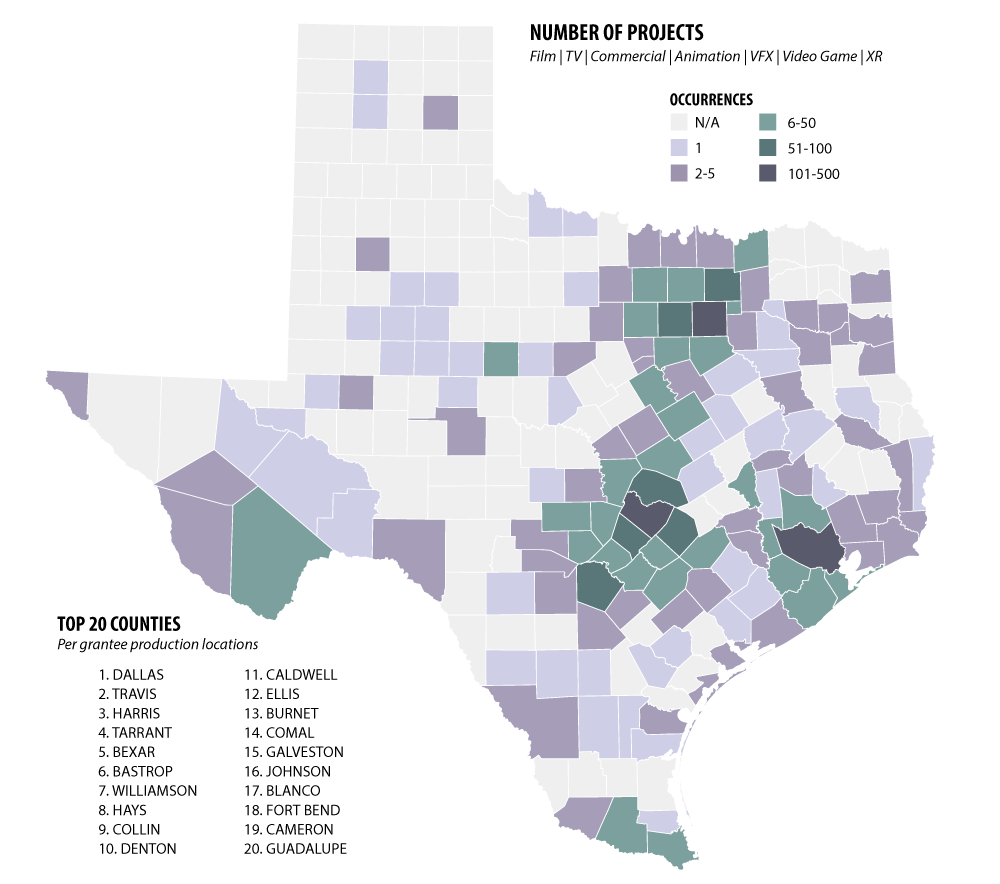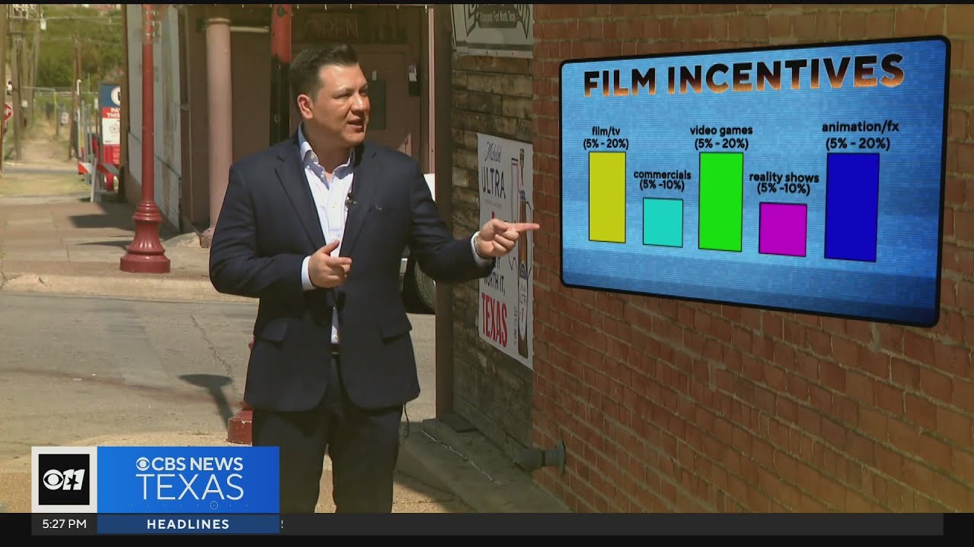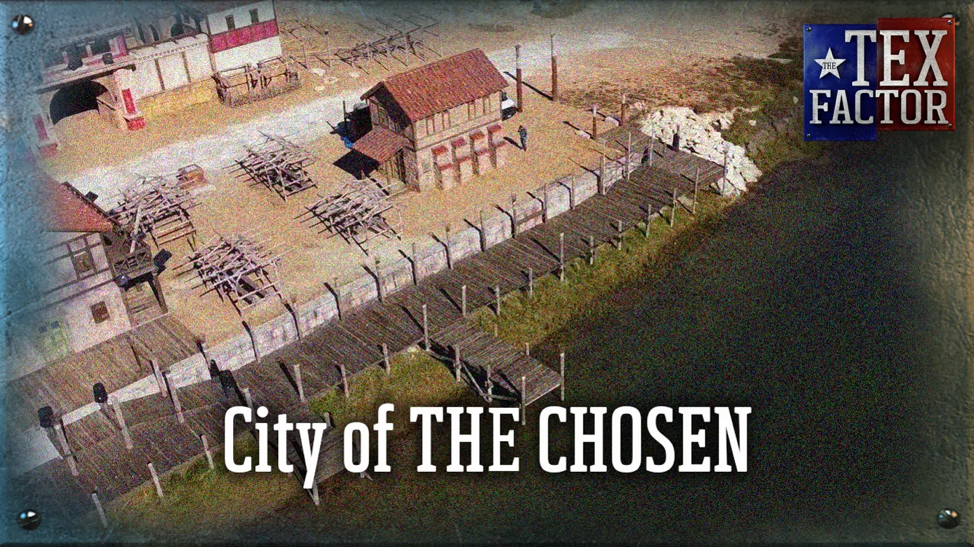Texas in Close-Up: Exploring the Lone Star State’s Media Ecosystem
Alisa Perren / University of Texas at Austin

The Texas media industries have been in the news a lot lately – and not just because Hollywood’s latest “It Man,” actor Glen Powell, has moved back to Austin. Publications ranging from The New York Times to Variety to Texas Monthly have highlighted recent efforts made by Texas to draw more production to the state due to an increase in the allocation to the Texas Moving Image Industry Incentive Program’s (TMIIIP) budget from $45 million to $200 million during the most recent legislative cycle.
In Austin, where I live, there is a tremendous amount of enthusiasm, anxiety, and speculation about what the impact of this funding increase will be. Questions I have heard posed frequently in recent months include: Who will benefit most from these incentives? What types of job opportunities will emerge for Texas residents from this bill? Will this jump-start a new phase in Texas media production? And will the legislature continue to invest in growing a local media industry or is this a one-time thing?
Such questions are not new. Many media studies scholars, economists – and legislators at various levels of government – have long debated the pros and cons of state and city level incentive programs to businesses, communities, and media workers. The impetus for this special issue, assembled with Hannah Wold, initially came from my own efforts to better understand the Austin media industry ecosystem.[1] As we connected with more members of the local media industry, we increasingly realized that while incentives can and do play an important role in shaping the size and scope of film, TV, and interactive media production in a region, numerous other economic, cultural, and technological factors also help constitute a regional media industry.

The articles featured in this special issue each are valuable in part because of the varied perspectives they provide on what has – and continues to – constitute the Texas media industries. In covering topics ranging from technological infrastructures (Selena Dickey) to public broadcasting (Deborah Jaramillo) to film festivals (Hannah Wold), we can see the varied funding sources, government agencies, and cultural institutions that have been involved in cultivating a vibrant local media landscape in varied spaces and places across Texas at different historical moments. At the same time, Kim Owczarski and Jennifer Porst provide distinct perspectives on how incentives are pursued by two different communities – Fort Worth and Dallas – and, in turn, how these communities envision themselves benefiting from such funds.
When reading these articles in conversation, two key tensions emerge. The first, as alluded to above, involves the relationship between production and industry. Production – and the incentives that accompany it – imply a degree of ephemerality. Media productions – even the long-running scripted TV series that often carry the greatest long-term economic benefits – only last for a certain amount of time. Attracting and retaining productions is an ongoing process, dependent on dedicated economic and cultural efforts by a range of stakeholders. An industry, in contrast, is more expansive in terms of the companies and cultural institutions that comprise it, the infrastructures that sustain it, and the range of media and cultural forms produced within it.
In reading this collection of essays, a second key tension involves the complicated relationship between an individual city/locality and the larger state of which it is a part. Most scholarship that has focused on local media economies has primarily taken a city level focus. Indeed, my own impulse when first beginning to research “local” media production was to look solely at Austin. This makes sense: places aim to differentiate themselves through their marketing to attract companies in a competitive business environment; journalists often focus on a particular locality in their feature articles; we live, define our identities, and conduct research in particular spaces and places; and studying a specific site is typically much more manageable than conducting state-level comparative analyses.
And yet much can be learned by foregrounding the role of the state in the U.S. context – something that is clear when reading across these articles. First of all, while individual cities can and frequently do provide their own incentives, the state is often the primary determinant of funding (and not just for moving image media, of course, but also for music, technology companies, theater, etc.). State decision-making regarding all forms of funding, of course, is inherently political: legislators decide whether to allocate resources based on whether they perceive benefit to (or the ability to promote benefits to) their constituents. Incentive packages thus need to be structured and promoted as serving many localities within a state, not just one or two high-profile cities. The case of Texas is an especially intriguing case in terms of the politics of incentive funding and city-state dynamics. For decades, due to its robust independent film, live music, and festival scene, Austin had sustained a reputation as the media capital of Texas.[2] Such a status may have augmented the city’s public image and aided its efforts to attract tourists. But many Texas legislators had little desire to allocate funds if they were seen as mainly serving those residing in the progressive bastion of Austin. Nor did politicians have a strong desire to attract “Hollywood” companies to a state so invested in its own identity – an identity produced in part due to state leaders positioning Texas in opposition to all things California. Attitudes began to shift, as Kim Owczarski notes in her essay, due largely to the success of Taylor Sheridan. His image, his shows, his presence in Fort Worth, and his lobbying efforts all pointed to a different (non-Austin-based) future for Texas media. Arguably as significant has been the hugely successful independently produced faith-based series,The Chosen, also produced near Fort Worth.
As much as behind-the-scenes lobbying from key stakeholders matters, the onscreen appeal of series like 1883 and The Chosen – not to mention the massive success of Waco’s Fixer Upper (and other Magnolia series) – helped present an alternative path for Texas media to either the “Hollywood machinery” or the “Austin indie” image of auteurs such as Robert Rodriguez and Richard Linklater. Whether these shows truly present a “third way” for the Texas media industries is contingent on what happens with this current cycle of incentives as well as how funding is allocated for the next legislative cycle.

But, as noted above, regardless of how the incentive funding plays out in Texas in the coming years – and how the image of Texas (and Texas media) is shaped due to such allocations and their associated promotion by state leaders, film commissioners, and filmmakers – there is much more that can be examined about the Texas media industries, past and present. Hopefully this special issue will help to jump-start just such conversations regarding what constitutes a “local” media industry, how we might best engage with complex city-state dynamics, and more. While Texas is an especially compelling case study due to its larger-than-life image, additional comparative analyses are merited across other states as well.

In our meetings with lobbyists as well as with industry professionals, a repeated mantra we have heard is “We aren’t Hollywood. But we also aren’t Georgia.” Some more time might be spent thinking about what exactly does constitute the Texas media industries. Through the Texas Archive of the Moving Image (TAMI), my colleague, Caroline Frick, has done an impressive job digitizing and displaying the amazing breadth of images produced across the state.[3] Over the course of this next year, through the Center for Entertainment and Media Industries, we aim to complement her team’s work by delving more behind the scenes. This work has already begun with a podcast series on Austin and will continue with a symposium along with the publication of a white paper focused on the Texas Media Industries. Hopefully the conversation generated in this special issue can fuel further discussion here, in those spaces, and elsewhere.
Image Credits:- Texas Comptroller’s visualization of the number of Texas productions by county (September 1, 2007-August 31, 2022).
- A local Texas news segment considers the potential economic impact of the latest incentives October 12, 2023 (Author’s screen grab).
- One of the many stories highlighting the production of The Chosen in Midlothian, Texas December 22, 2023 (Author’s screen grab).
- HBO’s mini-series God Save Texas (2024) illustrates the continued cultural fascination with the state of Texas.
- Thank you to Flow managing editors Katie Hartzell and Laurel Rogers for their invitation to assemble this special issue as well as their administrative support. [↩]
- Austin has and continues to sustain robust production in areas ranging from videogames to unscripted TV series to advertising. However, in its marketing materials, Austin – along with other state and city film commissions – tends to emphasize its role as a site for the production of feature films and scripted television series over other media forms due to the cultural cachet attached to them. [↩]
- It is worth underscoring that in addition to making a breadth of media content – ranging from local broadcasts to industrial productions to educational films to advertisements and more – available through their website and other digital media platforms, TAMI also is a vital component of the Texas media industry ecosystem through its role in digitizing and licensing content. [↩]
This is quite a useful and interesting information. I find it difficult to express my gratitude for you providing us with this insightful information. I appreciate you sending this information.